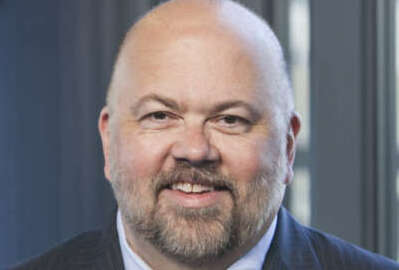
Is the administration’s pace of political appointments a problem or an opportunity?
They need experienced career staff to execute policy direction. It is probably safe to say there are too many political appointees in some agencies.
To listen to the Federal Newscast on your phone or mobile device, subscribe on PodcastOne or Apple Podcasts. The best listening experience on desktop can be found using Chrome, Firefox or Safari.
This column was originally published on Jeff Neal’s blog, ChiefHRO.com, and was republished here with permission from the author. Neal also discussed the issue on Federal Drive with Tom Temin.
The Partnership for Public Service, as part of its superb and comprehensive work on presidential transition, has partnered with The Washington Post to track presidential nominations and appointments for 638 key appointments that require Senate confirmation.
With 274 positions having confirmed appointees, 138 formally nominated, 8 awaiting nomination and 218 with no nominee, the administration is lagging significantly behind the Obama, G. W. Bush and Clinton administrations in nominating and appointing people to fill many key posts. The number of nominations is closer to that of the G. H. W. Bush administration.
The “key positions” include several chief financial officers, many assistant secretaries, the Department of Defense inspector general, the Director of the U.S. Marshals Service, administrators of three agencies in the Department of Transportation, the Deputy Secretary of the Treasury and many more. Interestingly, there were also critics who said that by the end of his first term, President Obama was leaving too many jobs unfilled (though a much smaller number).
Many people who work in and with the government are concerned that these key jobs are not filled with permanent appointees. Others say it is not that critical. Both camps can make some convincing arguments, so let’s take a look some of the more common views.
It is a problem. The lack of appointees in many critical jobs means that the administration does not have its own people in policymaking roles that are essential to shape and implement policies. The absence of those people means policy development is on hold or in the hands of career officials who are not accountable to the public. It sends a message that the administration does not care about the basics of running the government.
It is a problem, but it is not all the administration’s fault. The Senate bears much of the responsibility as well. 191 nominations that have been submitted are awaiting Senate action. The average number of days to confirm a nominee increased from 42 days during the G. W. Bush administration to 59 days during the Obama administration, and is now at 79 days for the Trump administration.
It is not a problem, because many of these jobs are not needed. President Trump has said that he has no intention of filling some political jobs because they are not needed. The president told Fox News, “You know, we have so many people in government, even me. I look at some of the jobs and it’s people over people over people. I say, ‘What do all these people do?’ You don’t need all those jobs.”
It is not a problem, because the jobs are being covered by acting officials. Jobs that do not have a confirmed appointee are being filled by acting officials who can carry out the responsibilities of the job. Everything that needs to be done is being done, and there should be no problem.
The truth is that all of those views are correct. Which answer applies is based on the job in question. For example, the Vacancies Act limits who can serve in many Senate confirmed jobs and how long they may serve. The Act, which covers the nondelegable duties of such positions, could render void the actions of an acting official whose service does not comply with the Act. Readers may remember this became a problem when Beth Cobert was serving as Acting Director of the Office of Personnel Management.
When the job has significant duties that cannot be delegated and where there is no other official who can carry out the duties beyond the time limits specified in the Vacancies Act, an agency’s ability to function may be harmed. The Vacancies Act (officially the Federal Vacancies Reform Act of 1998), is a rather complicated law whose applicability varies depending on the duties of a position, other laws that may cover a job, and many other factors. The Congressional Research Service published an excellent analysis last year.
In some cases a job can be filled indefinitely by an acting official. Many such officials are career executives who have extensive experience doing the work of the agency. They may in fact be far more qualified to do the job than many political appointees would be. In those cases, one can argue that not only is there no harm in having an acting person in the role, it may actually be better. In other cases that may not be the case. The acting official may be another political appointee who is not Senate confirmed. In those cases, the wisdom of having that person acting may be based entirely on how well-qualified that person is.
One of the arguments that I often hear is that it is better to have permanent appointees in these jobs. But what is permanent? A political appointee who serves for 18 months is not exactly a permanent leader. The turnover in political appointees is one of the reasons for disruption in agencies. A steady stream of political appointees into and out of an agency is not any better than many acting officials would be. It is true, however, that “permanent” political appointees are more empowered to get things done. An acting official, whether political or career, may spend more time treading water because of an actual or perceived lack of a mandate to do anything big.
There is no simple answer regarding the issue of the number of political appointees. Presidents and agency heads do need trusted officials who are part of the administration to lead the formulation of policy. They also need career officials who are experts in the work of the agency or critical support functions to inform fact-based analysis of policy options and implications.
They need experienced career staff to execute policy direction. It is probably safe to say there are too many political appointees in some agencies. The problem of “people over people over people” that the president described is a legitimate issue. Excessive layers of leadership in agencies can separate the people who direct policy from those who carry it out to such a degree that agency operations are affected. A leaner leadership structure may be better and more effective.
If leaner is the goal, for those jobs the administration has no real interest in filling because they believe they are unnecessary, the best course of action is to propose to the Congress that the job be abolished. Abolishing jobs that are not created by law is even easier. Most can be abolished by a stroke of the pen.
During the Clinton administration, Secretary Bill Daley promised to eliminate 100 political jobs in the Department of Commerce and did it. There are many political positions that are not needed or could easily be filled by career employees. In 1996 the Plum Book listed 1119 Senate confirmed jobs (PAS), 250 presidential appointments that did not require confirmation (PA), 701 non career SES, and 1465 Schedule C jobs. By 2016, the numbers were up to 1242 PAS, 472 PA, 716 non career SES, and 1538 Schedule C.
One could argue that:
- Having fewer political appointees is a good thing
- Agencies have too many layers
- That career officials are more interested in the effective operation of an agency in accordance with the agency’s enabling legislation rather than political considerations.
I believe a review of all political jobs is a good idea, and that such a review should be conducted in a professional and objective manner, with the criteria for determining what should or should not be political established in advance.
Whether the review is conducted by the Office of Management and Budget, a presidential commission, or by some other means, it could provide some certainty about which jobs will and will not be filled. That would end the suspense and allow agencies to get on with business.
Copyright © 2024 Federal News Network. All rights reserved. This website is not intended for users located within the European Economic Area.



